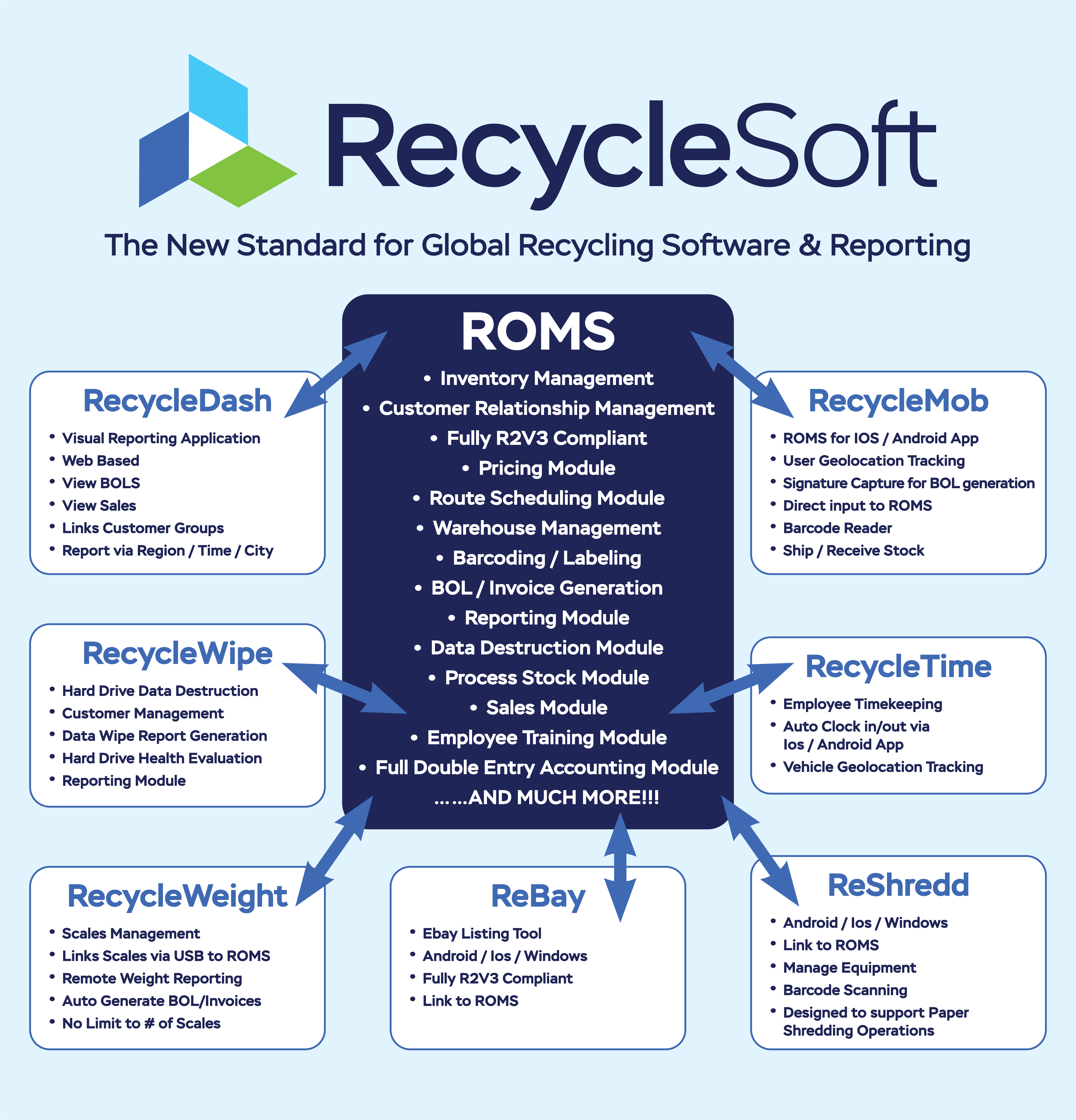ROMS is an Object Orientated system. An Object is a programming concept in which an object has Properties, Events and Methods. All items taken into stock in ROMS are objects. A Propertly would be it weighs 10 lbs, is a Dell, has 4GB of RAM and is a certain model. A method is an action that the object can perform. Imagine ‘Run Windows’ or ‘Play Audio’. An Event is something that can happen to the object. Think, sold or dismantled or refurbished.
There are hundreds of business rules enforced at the database level within ROMS. For example, all stock exists at a geolocated place and an employee is responsible for it. All stock is categorized to four levels, Category Set, Category, Sub Category and Template. Imagine ITAD, Laptop, Dell, LaptopModel. The template contains specific data about the item such as weight, R2V3 data, resale value range, scrap value range, carbon footprint and more. The template will automatically populate these values upon adding this stock to inventory.
A key concept linked to this is Inheritance. The user can inherit a template and modify it’s properties (value or weight for example) then save it as a new template which would keep all non modified values the same as the parent. Imgine inheriting a Model T Ford with all of it’s properties but adding red as a paint option which becomes a new object. This would also inherrit it’s containing sub category and category.
You, the owner may have several facilities all with slightly (or vastly) different functions. One facility does teardown, another ITAD another smelting. We have a concept called Category Set which is linked to an employee (who works at a facility). When adding stock, the teardown facility does not need the same category set as the ITAD facility. For example we need to know the component parts and the weights of each rather than the testing criteria for resale eligability. We call this a composite template. So, a given Dell server contains x lbs of high grade boards, x lbs of steel, x lbs of power supply and so forth. We just take, say, 1000 lbs of such a server into stock then dismantle it. ROMS will mark the servers as dismantled and take the constituent parts into stock. All marked as being sourced from the upstream provider.

We have three levels of Corporate Entity. An Organization is the top level owner of all the data and business rules. This Organization may own multiple Facilities which we call Processors. Processors have Employees and Customers. Customers are either places that you collect E-Waste from or you sell product to. Employees work at a Processor and perform roles which may require training (and proof of such to an Auditor).
Customers may belong to Customer Groups for a given Processor. Imagine a Server group or Switch group or Datacenter group. We also support complex route management. For example a route may be named ‘North Scottsdale’ and be the 3rd Tuesday of any month and contains these customers.
ROMS is extremely deep and wide but a user does not have to use all functionality at great detail. Use as much or as little to fit your business needs. We will be there to help you go as wide or as deep as you need. Should you need ROMS to link to other applications we can do that too. We have considerable expertize in using API’s.